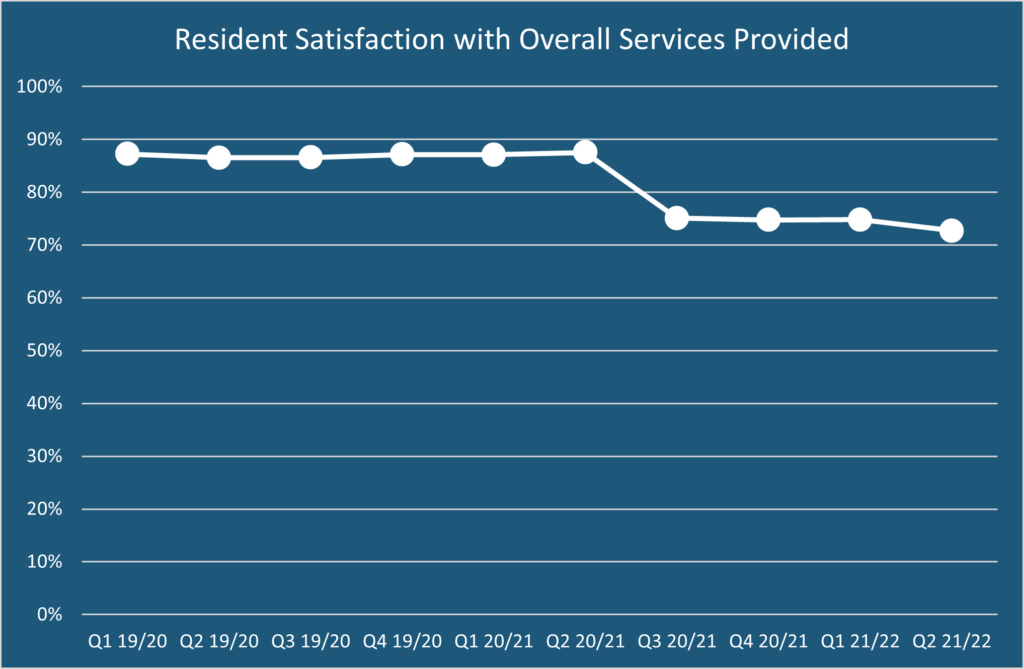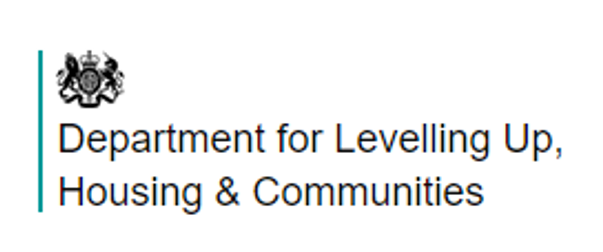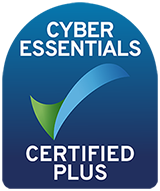 As the Regulator for Social Housing (RSH) consultation gets into full swing, I have taken the opportunity to address the top three issues that social landlords currently ask me about:
As the Regulator for Social Housing (RSH) consultation gets into full swing, I have taken the opportunity to address the top three issues that social landlords currently ask me about:
- What is the latest on the Tenant Satisfaction Metrics (TSMs)?
- What has happened to satisfaction ratings since we first locked down?
- How have landlords changed their approach to surveys during the pandemic?
Here’s what I say:
TSMs: Keep Your Powder Dry
The new consumer metrics (now generally referred to as TSMs), sketched out in the White Paper, have re-established a focus on resident satisfaction and engagement that some landlords seemed to lose when the previous regulatory regime was dismantled in 2012. The result is that many savvy landlords are currently evaluating how they measure up against the existing consumer standards, not least the Tenant Involvement and Empowerment requirements, and addressing the gaps. They are also using their surveys to gather essential intelligence on tenant preferences and priorities to better shape the customer experience going forward (more below).
However, there’s no urgent need to cobble together your own interpretation of the TSMs as the formal consultation process has yet to get in full swing. The Regulator of Social Housing (RSH) is keen to get the metrics right and has set out key principles to guide its efforts in turning the ideas set out in the White Paper into practical, useful and transparent performance indicators. The regulator is also keen that social landlords don’t fixate on the TSMs as being the last word on performance. The regulator sees them as a transparency tool for stakeholders and the starting point for understanding performance. They should not eclipse compliance with the revised standards – it is the standards that will drive excellence not the metrics.
Acuity is actively engaged with RSH in developing these metrics and will be keeping members up to date as the consultation progresses. For a detailed update on the new consumer regulation framework and its current timeline, be sure to check out my previous blog post and make sure that you sign up for our forthcoming regulatory webinar with the Robert Dryburgh, Assistant Director of Business Intelligence at the RSH where he will be giving an update on the Tenant Satisfaction Metrics from the RSH (10:30 – 11:30 am, Thursday 25 November 2021, click here to book).
Satisfaction Ratings have been Volatile
Based on Acuity data, the impact of the pandemic on satisfaction scores is now emerging. Up to March 2020, overall satisfaction had been rising slowly and peaked around the first lockdown when landlords made a concerted effort to support their residents. Satisfaction with the way in which landlords responded to the pandemic was often very high (above 90%). That said, some residents would have welcomed better communication of service changes. But then satisfaction rates dropped significantly in the second quarter of 2020/21 reflecting the impact of reduce repair services. Towards the end of the last financial year, a small recovery in satisfaction was taking place, but still well below pre-pandemic levels. Early indications from the first six months of this year suggest that satisfaction remains supressed.

It’s not clear what is driving this but Covid fatigue and uncertainty about the future are likely to be contenders. Such volatility is unusual. In the past, trend lines in tracking surveys have always been stable, but over the last 12 months or so they have fluctuated widely and sectoral medians over-simplify the quite diverse impact this dreadful episode has had on individual households. Only time will tell if we have reached a low point on satisfaction scores and whether, as we learn to live with Covid, ratings stabilise above current levels.
The Impact of COVID on Surveys
When the country locked down in March 2020, Acuity was finalising a broad range of large one-off surveys, ongoing tracking surveys and transactional surveys (ie where the tenant is contacted shortly after using services such as responsive repairs, lettings, ASB and complaints). Unsurprisingly, all one-off surveys were postponed and transactional surveys were significantly limited as landlords reconfigured service delivery for a ‘new normal’.
Despite this, all but one of our tracking clients made the decision to continue to survey residents in the first quarter (April to June 2020) often adding in one-off questions to gain a better understanding of how their customers were dealing with the pandemic, what support they might need and their reactions to changes in landlords’ service delivery.
As we’ve learnt to live with Covid, landlords have resumed surveying residents with a renewed impetus thanks, in part, to the need to anticipate how the White Paper will impact the tenant/landlord relationship. But it’s also fair to say that Covid has forced all landlords to consider the wellbeing of their tenants in a way that some otherwise might not have. Consequently, there has been a growth in new survey questions focussing on resident engagement and wellbeing.
The White Paper’s influence can also be seen in new questions relating to decarbonisation and the landlord’s contribution to the neighbourhood (a subtle addition to the tried and tested quality of the neighbourhood). The latter is only really relevant where landlords have a significant presence in the area and can influence the management and appearance of neighbourhoods.
We have also found a shift away from the traditional postal surveys (typically a large one-off exercise) to a greater use of telephone interviews (carried out over a period of time). Increasingly, landlords are including an online option for their tenants to participate in the survey which seem to be reaching groups that would not normally respond to postal or telephone surveys.
Spotlight on the landlord/tenant relationship
The pandemic and White Paper are already throwing a spotlight on the landlord/tenant relationship. It’s clear from the early days of the pandemic that providers who tune in to what tenants want, and then go the extra mile to deliver it, enjoy a better relationship with their tenants. Carrying out a resident satisfaction survey in the future shouldn’t just be about supplying TSM scores – it needs careful thought about how best to capture the tenant voice in a meaningful way to help shape services that meet expectations and are fit for the future. Indeed, during In-Depth Assessments, the RSH is already asking the question ‘how does the board hear the tenant’s voice when making decisions?’ Surveys are so much more than keeping score; they’re a vital engagement tool to help ensure delivery of your social mission, and in so doing, help meet regulatory requirements.
If you need help thinking through your approach do not hesitate to contact us to find out how we can help you to take customer service and tenant satisfaction to the next level.






Comments are closed.